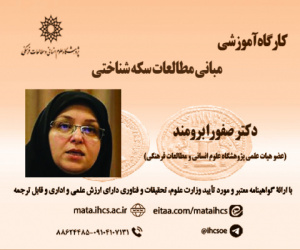راهبردهای ارتقای بهره وری سرمایه های انسانی یگان های نظامی (مورد مطالعه: کارکنان پایور ستاد آجا) (مقاله علمی وزارت علوم)
درجه علمی: نشریه علمی (وزارت علوم)
آرشیو
چکیده
هدف: راهبردهای ارتقای بهره وری کارکنان پایور ستاد آجا که مأموریت خطیر نظارت، هدایت و راهبری نیروهای چهارگانه و یگان های تابعه ستاد آجا بر عهده دارد، کدم اند؟روش: جامعه آماری تحقیق شامل معاونین آجا و معاونین نیروی انسانی نیروها، رؤسای ادارات و مدیران میانی ستاد آجا و نیروها هستند. به علت ویژگی خاص و محدود بودن درمجموع تعداد 36 نفر برآورد شد و به صورت تمام شمار به عنوان حجم نمونه در نظر گرفته شد. ابزار جمع آوری داده ها در این تحقیق بررسی اسناد و مدارک و پرسش نامه بوده که اطلاعات جمع آوری شده با استفاده از روش های آماری مناسب تحلیل شده اند.یافته ها: پس از تجزیه وتحلیل داده ها حاصل از محیط شناسی عوامل محیط داخلی (13 قوت، 15 ضعف) و عوامل محیط خارجی (10 فرصت،12 تهدید) قابل اعتنا تشخیص داده و احصا شدندنتیجه گیری: شش راهبرد (ارتقای سطح معیشت کارکنان، استقرار عدالت سازمانی در اعطای امتیازات، برقراری نظام شایسته سالاری، ارتقای بصیرت و آگاه سازی کارکنان، بازنگری در ابقاء، کیفی سازی جذب و گزینش در ستاد آجا، ارتقای سطح آموزش های ضمن خدمت کارکنان) می تواند بهره وری کارکنان پایور ستاد آجا را ارتقا بخشدStrategies for Improving the Productivity of Human Capital in Military Units (Case study: I.R.I. Army Staff Cadre)
Objective: This research aims to answer this fundamental question: What are the strategies for improving the productivity of the staff cadre, which has the important mission of supervising, guiding, and leading the forces and subordinate units of the Army staff?Methodology: The present research is of an applied type based on the achievement, of a descriptive-case type based on its objectives, and of a mixed type (quantitative, qualitative) based on the data used. The statistical population of the study included Army deputies and human resources deputies of the quadruple Forces, heads of departments and middle managers of the Army and Forces, which, due to their special and limited characteristics, was estimated to be a total of 36 people and it is considered as the sample size in whole numbers. The data collection tool was a review of documents and a questionnaire. Collected information was analyzed using appropriate statistical methods.Findings: After analyzing the data obtained from the environmental evaluation, significant I.E.F. and E.E.F. were identified and quantified.Conclusion: Considering the internal and external environmental conditions of the Army Staff, the strategic position of cadre productivity is at the beginning of the mildly aggressive zone. In this regard, six strategies (improving the standard of living of personnel, establishing organizational justice in granting privileges, establishing a meritocracy system, improving personnel insight and awareness, reviewing retention, improving the quality of recruitment and selection in Army Staff, and increasing the level of in-service training) can improve the productivity of the Army Staff cadre







